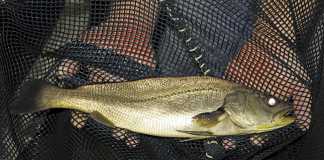
The promotion of new technology in any industry follows a predetermined path. This is one of experimentation, assessment of results, data gathering and refinement of systems. If these prove successful, only then is the technology promoted for sale.
In intensive livestock production this logical process is essential, as it requires that many factors be combined at often near-critical levels for the well-being of the animals. This applies particularly to recirculating-type aquaculture. Promotion
of new systems based on an incomplete process results in unrealistic expectations on the part of the customer who has invested in it.
Prove it!
Some years ago, a recirculating-type system claiming production of 69t/year from a 50m tunnel system was heavily promoted. The recommended stocking rate was 43kg/ m3, and the system claimed to be able to hold 21t of fish at any one
time. This was despite no use of single- sex tilapia (all-male), no sediment trap, rudimentary biofiltration and a generally user-unfriendly design. An annual profit of R60 000 on an investment of R800 000 was claimed.
South Africa now has a sufficient number of efficient recirculating systems for one to gain valuable, if anecdotal, information on many technical aspects that affect intensive tilapia production. A stocking rate of anything over 30kg/ m3 water seems unrealistic, and any higher claims must be based on proven empirical data.
Factors such as oxygen content, nitrate build-up and problems associated with green water and fish living space are all considerations that will reveal themselves once the research is complete; they cannot be extrapolated. An aquaculture fitration system has to meet several requirements. It must provide effective filtration and removal of solid wastes before they clog bio-filters.
It must be affordable, both at installation and operational stage. And finally, it must be simple; in Africa, high-tech designs requiring continuous electricity, parts availability, on-call reps and backup may not be available. Can the livestock survive in their absence?
Production expectations are the most frequent cause for disappointment. I maintain that any 50m tunnel- based system recirculating around 200 000l water that produces 5t of 0,5kg tilapia annually is doing well. No doubt this figure will set off howls of protest that other ‘new’ systems can double or treble that. Well, prove it, and prove it sustainably at full loading – not at experimental level.
Be realistic
In pond aquaculture, a realistic figure for fertilised pond production is between 2t/ ha to 4t/ha annually, and double that with supplementary feeding. A small 100m2 pond could therefore produce no more than 30kg to 50kg fish annually, even with rudimentary filtration through plants.
Larger ponds are more productive, as the fish have living space, and tilapia, being a shoaling species, do not occupy all the space evenly. This allows for the growth of other live feed organisms.
Nicholas James is an ichthyologist and hatchery owner.













